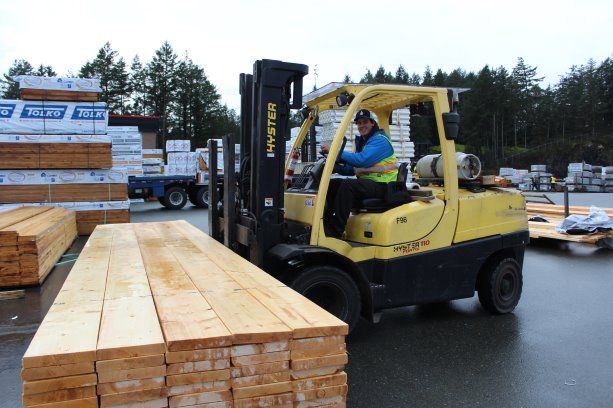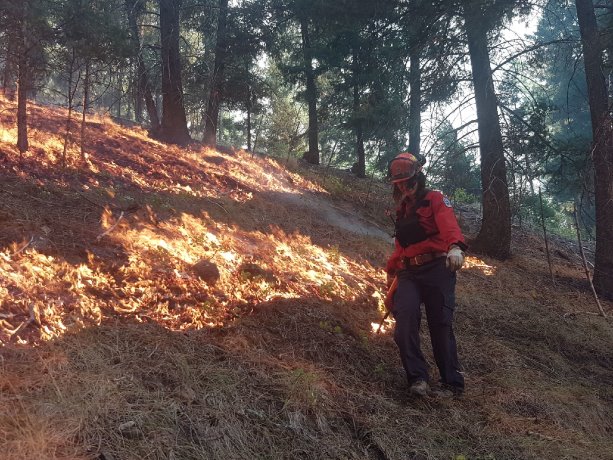With two of the largest lumber producing areas and both of the largest plywood/sheathing production regions in B.C. hit by wildfires for much of the summer, builders are facing unpredictable price hikes and diminished supply. And the problem isn’t about to go away anytime soon.
To get mills back up and running after the fires are out can take weeks, in part because infrastructure, including roads and communities, has to be repaired and rebuilt.
"We may not see logging resume until the end of September or early October in a lot of these areas," says Pat Millsap, a commodity purchaser with Slegg Building Materials, one of Vancouver Island’s largest suppliers to the construction industry.
It is "an unprecedented fire year," says Millsap, noting at press time that the cost of lumber was up 10 per cent and the price of sheathing had doubled.
While lumber and sheathing prices are always subject to market fluctuations – wildfires or not – now the volatility can result in two or three price changes a day.
Prior to the wildfires, Slegg’s policy was to maintain material prices for at least 30 days to help builders accurately cost jobs, but the fires have resulted in that number being reduced to 15 days, says Tim Urquhart, president of Slegg. New customers, however, must pay current market prices.
Millsap says Slegg won’t see the full effect of the wildfires on its business until the second week of September which is when its order files for lumber and sheathing are built out.
"Are they (mills) going to actually be able to produce on that product?" he adds.
"Our real challenges are going to be in unforeseen closures…in late shipping."
While there is no sign of a change in the weather for the better in B.C.’s Interior, Urquhart says even when it happens and the fires are put out, there is a "cooling off period in the bush" before logging can resume. When added to other factors, it will take at least three to five weeks once fires die before production can resume.
"If at the end of August a mill is out of logs, they are not running again until at least the first or second week of October," says Urquhart.
Complicating the growing supply problem is the pent-up demand for housing in many parts of Vancouver Island and B.C.
Urquhart adds other provinces and regions, including southern Ontario, are "just as reliant" as Slegg is on plywood produced in the Cariboo region – one of the prime production areas in B.C.’s Interior.
Lumber, too, he says is also headed east to Ontario and other provinces as well as the U.S.
"It affects everybody," says Urquhart.
Millsap adds that estimates are the fires have cut exportable lumber products by about 30 per cent.
But Urquhart doesn’t expect major construction projects will be put on hold because of the wildfires.
Material supply companies and others that didn’t have the foresight to plan for the unexpected, however, might be in for a rough time, he says.
Slegg and other material suppliers have sought alternative sources of product. Panels and sheathing from Asia are an example, he adds.
Still, lumber and sheathing/panels are separate industries and finding a source for one doesn’t guarantee a supply for the other.
"The bottom line is whoever is going to pay the most money is going to get that wood pile," Millsap says.
It has been a tumultuous year in the forest industry with pricing on many products rising for reasons beyond the wildfires. Duties on lumber saw the price go up 30 per cent overnight and it happened twice this year, explains Millsap.
Sheathing markets shot up as demand surged after a late start to the building season in Central Canada because of a wet spring, he adds.
Urquhart says while prices can drop on lumber and sheathing supplies it won’t happen overnight.
"It takes a long, long time. What goes up rapidly (overnight) can take a couple of months to work itself back off and with the impending log shortage I don’t see the market coming off in a steady or consistent fashion this year," he says.
Sidebar: Housing demand, available land also driving up costs
VICTORIA — The price of plywood has gone up 30 per cent and lumber 10 per cent in the Greater Victoria area in the last few months.
Builders get notices every couple of weeks about more increases on lumber and sheathing products.
It would be easy to think that B.C.’s wildfires are the sole reason for the hikes. But that would be wrong.
Victoria saw the highest number of housing starts last year since 1989 and the pent-up demand for new housing continues this year, says Casey Edge, executive director of the Victoria Residential Builders Association (VRBA).
Edge says while the wildfires in the province’s Interior have hit key wood mill production regions hard, "exacerbating the issue" of rising materials costs on Vancouver Island, the "big demand" for new housing in the area has much to do with the overall increases in materials, which includes non-wood materials such as insulation and concrete. Labour rates are also on the rise.
While the fires present an immediate problem, a "big challenge" in the Greater Victoria Area over a longer term for builders is securing developable land.
Part of the problem is persuading municipalities to rezone low-density residential areas where small houses have large lots to allow higher density housing.
The Greater Victoria Area is made up of 13 municipalities, few of which "encourage" development through "efficient and affordable building permit processes," Edge says.
One of the municipalities that does, however, is the City of Langford, which had 649 housing starts by August 2017, while two nearby municipalities in Greater Victoria only had a total of 15.
The VRBA has about 180 members, of which 100 are builders of single- and multi-family projects.












Recent Comments
comments for this post are closed